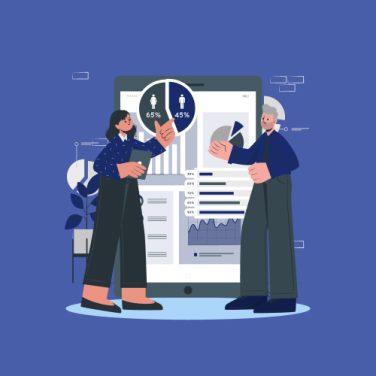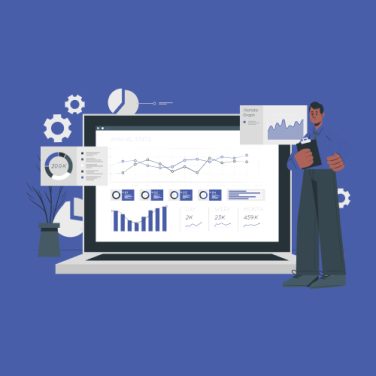Traditional HR tools handled only basic record keeping. Modern cloud-based HCM platforms deliver end-to-end workforce management, offering:
- Centralised employee databases and org charts
- Automated payroll and compliance updates
- Talent acquisition and onboarding workflows
- Real-time analytics for strategic decision-making
Organisations invest in HCM software to boost efficiency, reduce manual tasks, ensure compliance across regions, and unlock predictive insights into workforce trends.
Core HCM modules and their functions
| Module | Main Functions |
|---|---|
| Core HR & Employee Database | Centralised personnel records, org charts, web-based directory |
| Payroll Management | Automated calculations, multi-currency payslips, tax compliance |
| Talent Acquisition & Onboarding | Job postings, applicant tracking, e-onboarding workflows |
| Performance & Succession Planning | Goal setting, employee reviews, career path modelling |
| Learning Management | Course delivery, progress tracking, certification management |
| Time & Attendance | Clock-in/out, shift scheduling, geofencing |
| Compensation & Benefits | Plan design, enrolment management, budgeting tools |
| Analytics & Reporting | Dashboards, ad-hoc reports, predictive workforce insights |
Essential features of top HCM software

Leading HCM platforms provide a range of capabilities to streamline HR and empower employees:
AI and Analytics
- AI-powered predictive turnover and workforce trend insights
- MiHCM Data & AI for real-time talent gap analysis
Workflow Automation
- Configurable low-code builders for HR requests and approvals
- SmartAssist automation for routine tasks
Employee Self-Service & Mobile
- Self-service mobile app for timesheets, leave, and payslips
- Notifications and chatbot support for common queries
Compliance Automation
- Automated statutory updates across jurisdictions
- Audit trails and role-based access controls
These features reduce HR ticket volumes and enable smarter workforce planning through predictive analytics.
Benefits of implementing HCM software
Implementing HCM software delivers measurable business advantages:
- Enhanced efficiency in HR operations and reduced manual intervention.
- Improved compliance across global payroll with automated statutory updates.
- Faster talent acquisition and streamlined onboarding processes.
- Greater employee engagement through self-service and mobile access.
- Data-driven decision-making via dashboards and real-time reports.
- Scalability to add modules as the business grows without system overhaul.
Choosing the right HCM software: Key considerations
- Business Objectives: Define strategic HR goals before vendor evaluation.
- Module Mapping: Identify required functions—core HR, payroll, recruitment, performance, learning.
- Total Cost: Assess licensing, implementation, support, and upgrade fees.
- Scalability: Evaluate cloud vs on-premises, modular licensing for growth.
- Integration: Ensure APIs support ERP, CRM, and productivity tools.
- Usability: Prioritise intuitive UX, mobile access, and adoption metrics.
- Vendor Credentials: Check case studies, customer references, and SLAs.
- Security & Compliance: Confirm data privacy certifications and role-based controls.
Implementing HCM software: Best practices
- Cross-Functional Team: Involve HR, IT, finance, and stakeholders.
- Governance & Change Management: Define clear processes and approvals.
- Data Migration: Audit and clean legacy records, map to new data structures.
- Configuration: Set up workflows and roles aligned to HR policies.
- Testing: Conduct unit, integration, and user acceptance tests.
- Training: Offer live sessions, video tutorials, and manuals.
- Go-Live Support: Launch pilot groups, establish a helpdesk, gather continuous feedback.
- Adoption Monitoring: Track usage metrics and refine processes post-deployment.
Measuring ROI and success of HCM software
- Time-to-Hire & Cost-per-Hire: Track reductions post-implementation.
- Payroll Accuracy: Measure error rates and processing time improvements.
- Compliance Incidents: Monitor audit findings and regulatory breaches.
- User Adoption: Analyse portal logins and mobile app sessions.
- HR Productivity: Count tickets closed and workflow cycle times.
- Turnover & Retention: Correlate engagement module usage with retention rates.
- Cost Savings: Sum manual task elimination and optimised headcount.
Emerging trends: AI, cloud, and mobile in HCM
- AI & Machine Learning: Automated talent insights, predictive analytics.
- Cloud-Native Deployments: Rapid feature updates, global accessibility.
- Mobile-First Design: Self-service and on-the-go approvals.
- Chatbots & Virtual Assistants: 24/7 HR query resolution.
- GenAI Applications: Resume screening, personalised learning recommendations.
- Microlearning Integration: Bite-sized training modules and social learning features.
- Blockchain Potential: Secure credential verification and identity management.
HCM vs. HRMS vs. HRIS: Understanding the differences
- HRIS: Core database and transaction processing (employee records, basic reporting).
- HRMS: HRIS plus payroll, benefits, and basic talent management.
- HCM: HRMS extended with strategic modules like performance, learning, and analytics.
Choose HRIS for simple record keeping and compliance. Opt for HRMS when payroll and benefits automation are priorities. Adopt a full HCM suite to support advanced talent, performance, and analytics needs.
Global payroll and compliance management

- Multi-currency processing and real-time exchange rate handling.
- Local statutory reporting, tax withholdings, and annual forms.
- Automated legislative updates for labour law changes.
- Compliance dashboards and detailed audit logs.
- Vendor networks for country-specific expertise.
- Configurable pay rules to address divergent statutory requirements.
Future outlook: Scaling with HCM software
As organisations grow, HCM platforms must adapt:
- Modular licensing enables incremental feature adoption.
- Data scalability to support high-volume global workforces.
- Expanded AI modules for succession planning and sentiment analysis.
- Support for hybrid work through mobile and collaboration integrations.
- Ecosystem marketplaces for third-party apps and connectors.
MiHCM’s suite differentiators
- Modular Tiers: Lite, Enterprise, Data & AI, SmartAssist—select the right level for your needs.
- Predictive Analytics: MiHCM Data & AI surfaces real-time workforce insights.
- Intelligent Automation: SmartAssist automates repetitive tasks.
- Virtual Assistant: MiA delivers instant business answers and boosts engagement.
- Compliance Engine: Auto-updates local regulations globally.
- Scalable Architecture: Seamless upgrades support startups to enterprises.



